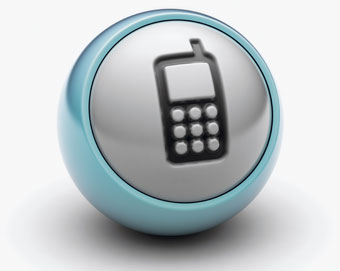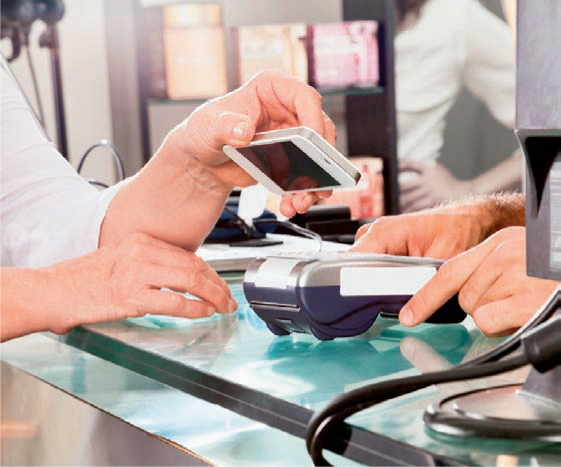 Disruption.
Disruption.
There is the one-word theme of the Money2020 innovation in payments conference that filled the Aria Hotel's convention center in Las Vegas in early October.
About 4,000 new-style payments geeks filled the room and everywhere the buzz was loud: A new day is dawning in payments and there will be winners and losers.
Yet there also was a kind of sobriety, an awareness that the disruption of the legacy financial services infrastructure is taking longer than many had once believed.
And that delay gives legacy players – namely credit unions – time to craft strategies aimed at holding onto a meaningful role in the new payments landscape that definitely is coming.
Here are five things you don't know about this landscape because you weren't at Money2020:
Next Page: Mobile Wallet Watch
Still Waiting on Mobile Wallets
Call Money2020 the epicenter for mobile wallet true believers, but even here the most common answer given when asked when paying with a mobile phone at retail would become commonplace was “2020 or later,” offered by 22% in a flash poll of the audience.
 What is holding broad adoption back? Pretty much everything. Most phones continue to lack built-in transaction capabilities. Most retailers couldn't process the transactions anyway (although EMV adoption, if it happens anywhere near scheduled, may change that in the next few years). And neither customers nor merchants are in a rush to adopt pay-by-phone tools.
What is holding broad adoption back? Pretty much everything. Most phones continue to lack built-in transaction capabilities. Most retailers couldn't process the transactions anyway (although EMV adoption, if it happens anywhere near scheduled, may change that in the next few years). And neither customers nor merchants are in a rush to adopt pay-by-phone tools.
But that doesn't mean this is dead. It took a full generation, even longer, for credit cards to move out of a few affluent hands into the broad middle class. If anything, the shift to mobile payments will probably come much faster, predicted multiple Money2020 experts. But it won't happen overnight.
As for why the shift is inevitable, mobile phones have advantages plastic cards could never have – namely “they are always connected and always authenticating,” said panelist Deepak Jain, CEO of DeviceFidelity, a Richardson, Texas, developer of contactless tools for mobile phones.
Add in the ability to deliver location-based offers, and phones will win. The only question is how soon.
Next Page: RIP Branch Banking
Branch Banking is Dead
So pronounced three of four panelists at Money2020 and the fourth, Steve Streit, CEO of Green Dot, the prepaid card company which owns GoBank, offered at best a tepid endorsement of branch banking's future.
And he insisted his goal with mobile-focused GoBank, which operates a lone branch in Provo, Utah, is “to make it all the bank you need.”
Streit added: “With mobile you always have your branch with you.”
Alpesh Chokshi, who runs Bluebird for American Express, offered the metric that underlines why at least some financial services visionaries believe branches will go the way of the dodo.
“The cost structure of a traditional bank is two and one-half times higher than ours,” said Chokshi.
Next Page: MCX Rising, Isis Falling, NFC on Hold
MCX Rising, Isis Falling, NFC on Hold
 Three big payments initiatives, three different reactions among Money2020 attendees.
Three big payments initiatives, three different reactions among Money2020 attendees.
MCX, the payments platform pushed by big retailers such as Walmart and Sears, seemed to win respect from attendees. That was a change from last year's event where many saw the initiative as a tool Walmart in particular was using to attempt to win better terms from MasterCard and Visa.
Flash forward to 2013 and the new view on MCX is that the players are serious about this and, probably, they will launch pilots within six months. The impact on credit unions may be slight – demand deposit account-based payments apparently will be featured in MCX.
It is unclear if MCX will allow payments via MasterCard or Visa. Many think the answer will be no.
As for Isis – the tap-and-go mobile phone payment network jointly owned by Verizon, AT&T and T-Mobile – although CEO Mike Abbott bravely took the Money2020 stage with an optimistic keynote, observers pointed out that Isis offered no concrete timeline for a national rollout and Abbott also offered scant details about the pilots that have run for a year in Salt Lake City and Austin, Texas.
That lack of detail caused at least some observers to see a bleak future for Isis, although others pointed out it remains very early days in payments and the big carriers have enough clout to claim a spot at the negotiating table.
As for NFC – Near Field Communication – once the darling of the mobile payments set and now apparently in perpetual hold, indifference seems to be today's attitude.
“We are not seeing any interest,” said Jim Macari, director of innovation and product development at Phillips 66. “It's not surprising,” he shrugged. “There isn't much difference between tap and go and swipe and go.”
There even were deep divisions on a panel devoted to NFC that asked the question, “Is the industry on hold?”
Some panelists said they held to the belief that NFC would prevail, while another said it would not prevail in its current state, and a third flatly predicted it would never win at point of sale.
So call the outlook for NFC as mixed.
Next Page: Picturing Tomorrow's Bank
Picturing Tomorrow's Bank
 What distinguished the panel entitled “Tomorrow's Bank” was this irony: Not a single panelist worked at a traditional financial institution (that is, a bank or credit union).
What distinguished the panel entitled “Tomorrow's Bank” was this irony: Not a single panelist worked at a traditional financial institution (that is, a bank or credit union).
“That says a lot about where we are,” said moderator Sam Maule, a consultant with Carlisle & Gallagher.
And yet “I don't see a fundamental change in banking over the next 50 years,” said Wade Arnold, CEO of Banno, a data analytics company focused on financial institutions. “It will still be savings and lending,” that is, financial institutions will continue to live on the spread between the cost of money taken in and the rates won in lending it out.
Arnold also noted, that in his opinion, cost reduction is a loud mantra in banking today and what this has triggered is a sharp rise in self-serve channels.
Paul Doyle, CEO of VerifyValid, a Grand Rapids, Mich., payments innovator, added that “the elephant in the room is business banking. That is where most innovation happens because that is where the revenues are for financial institutions.”
Mark Critchett, marketing director at NCR Corp., added that he sees a lot of innovation at financial institutions, especially large ones. “They need to innovate to maintain their scale.”
Added Doyle: “Banking in 2020 will look a lot like banking in 2013” – meaning, expect changes but know that change evolves at a cautious pace in financial services.
Next Page: Banks in Pole Position But Race Not Won
For Financial Institutions to Lose
 A big era of upheaval lies ahead in financial services.
A big era of upheaval lies ahead in financial services.
Is it time to play taps for community banks and credit union?
“There is a lot of conversation, but I think it is unlikely existing payments players will go away,” said Bill Ready, CEO of Braintree, a Chicago payments startup recently acquired by eBay for $800 million in an all-cash deal.
He added, “There is a lot of innovation on top of the existing rails. It is unlikely we will get rid of existing payments networks.”
Kevin Laracey, CEO of Paydiant, a Boston-area developer of mobile wallet technologies, said on another panel, “I think banks are in the pole position. Banks are very committed to being innovative. It's about trust. If I am trusting my bank, they will be in the pole position. This doesn't mean they can't fumble this.”
Other panelists – many – suggested that the time is ripe to disintermediate financial institutions, especially ones that have been slow to embrace game-changing technology.
But, said Laracey, when it comes to the consumer and his or her wallet, what matters is trust – and, right now, they are a lot more likely to trust the bank or credit union that they do business with already than they are to trust their financial well-being to a tech titan, no matter how cool and cutting edge.
At least for now.
Also From Money2020:
Isis Still Alive
Death of Branches?
CU Wallet Picks Paydiant
MCX Coming at You
NFC On Hold or a Go?
Mobile Needs One-Click Purchasing
© 2025 ALM Global, LLC, All Rights Reserved. Request academic re-use from www.copyright.com. All other uses, submit a request to [email protected]. For more information visit Asset & Logo Licensing.







